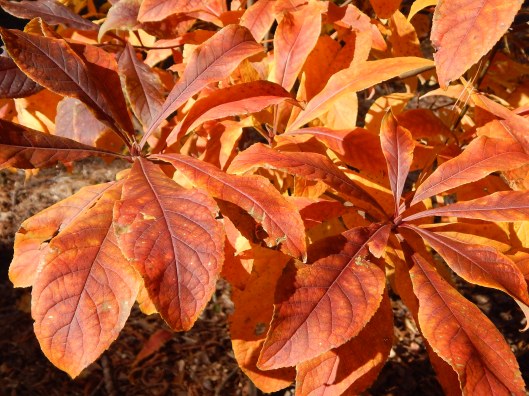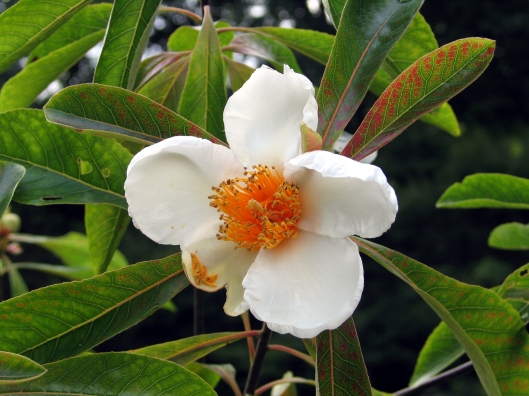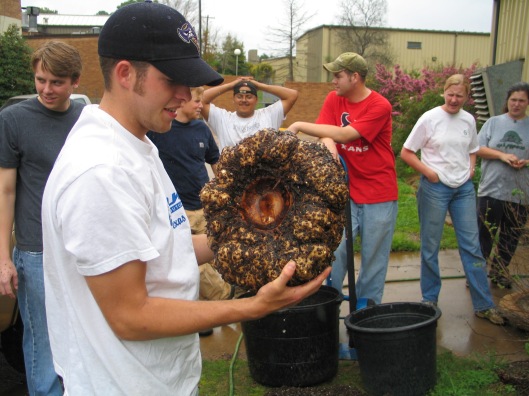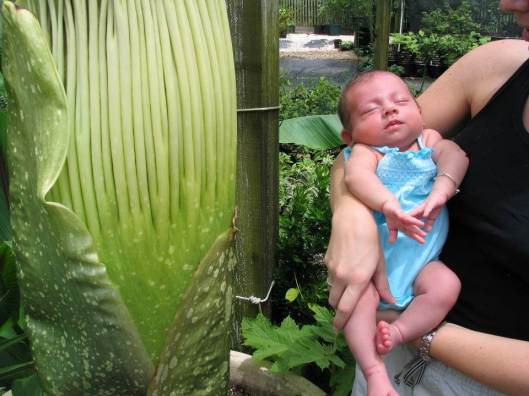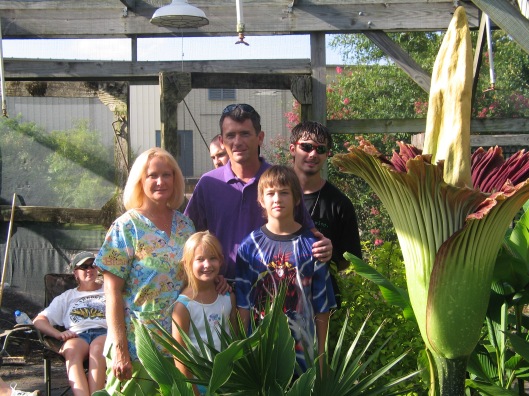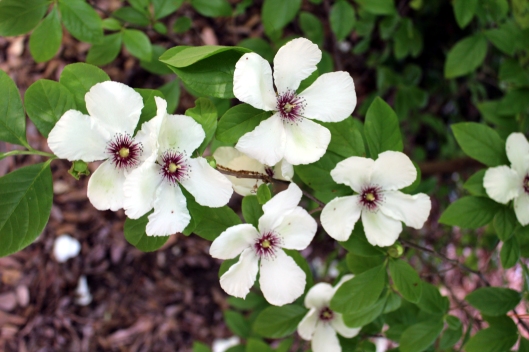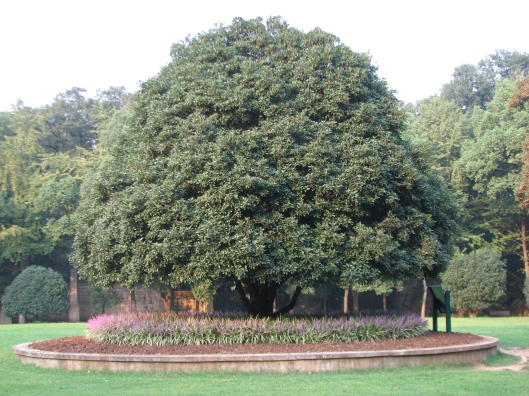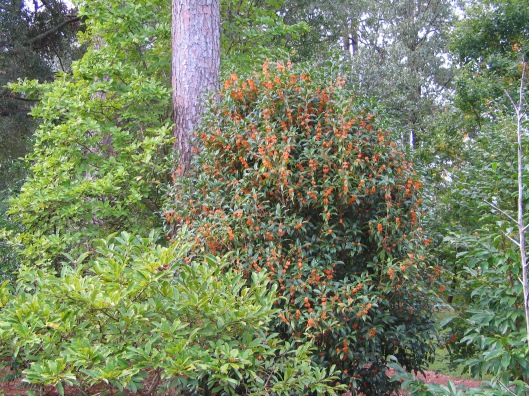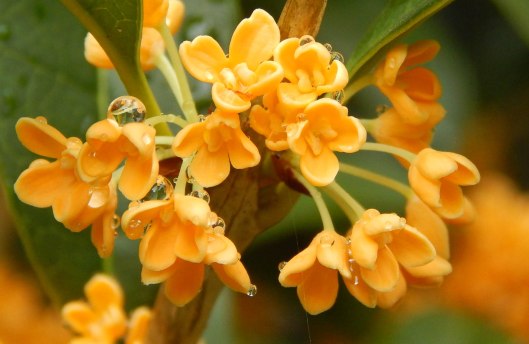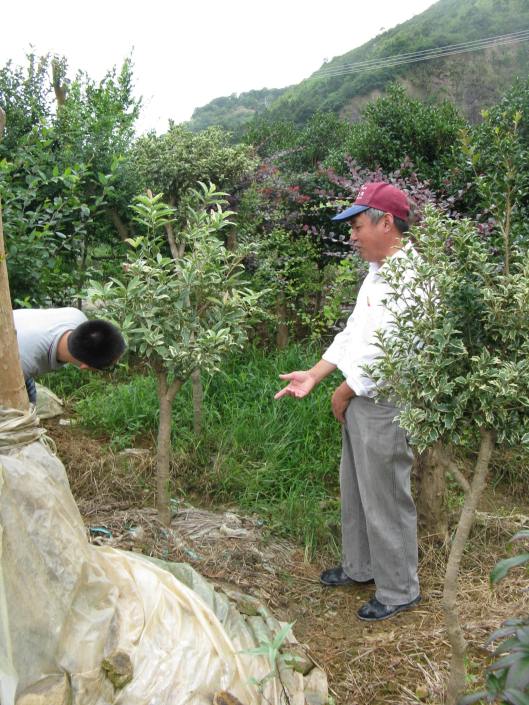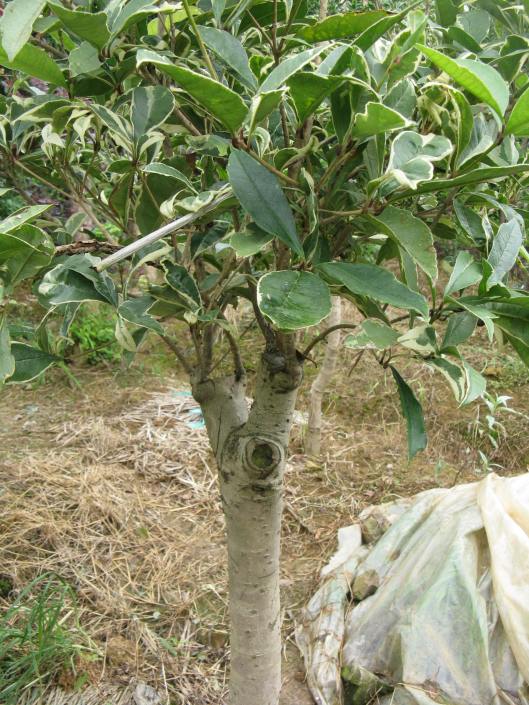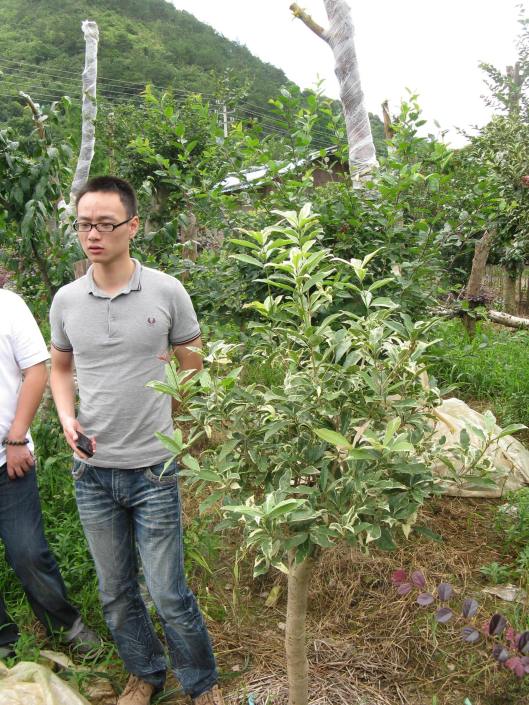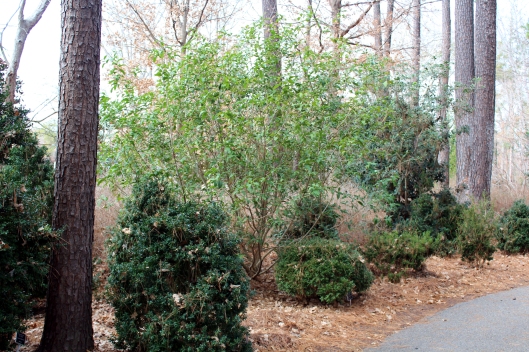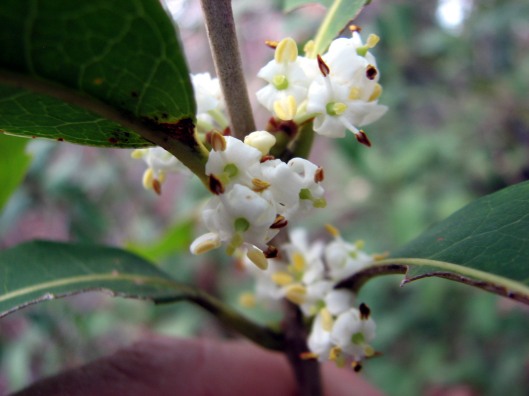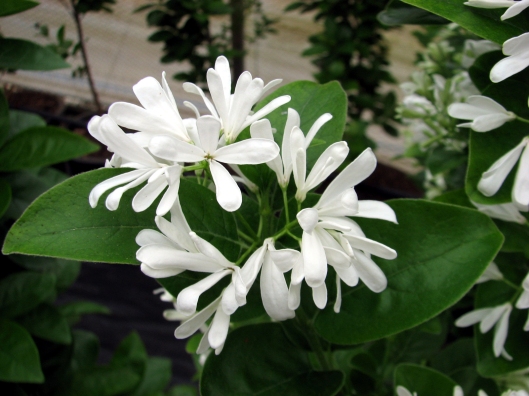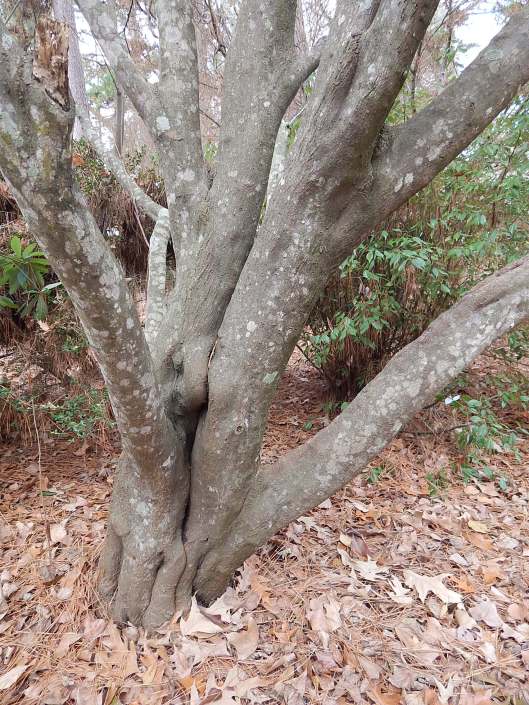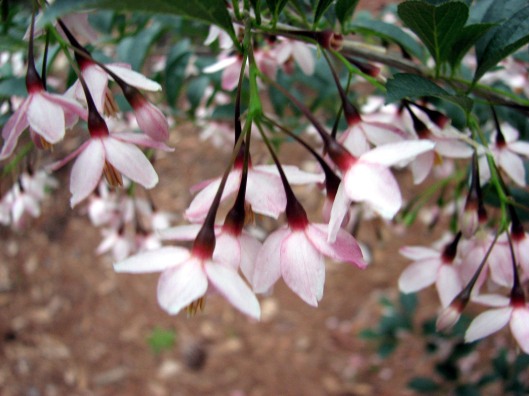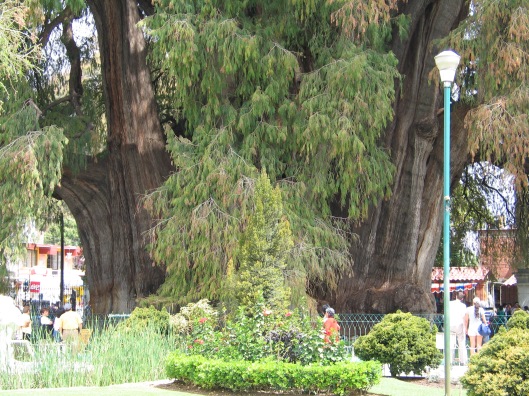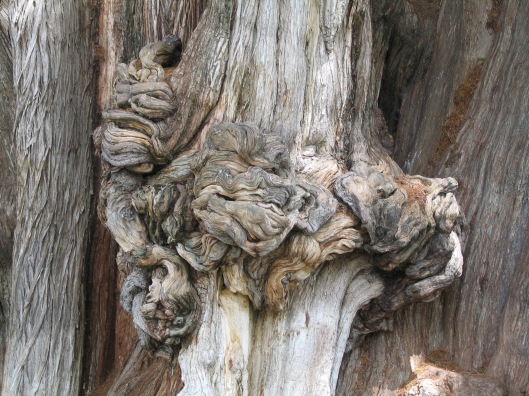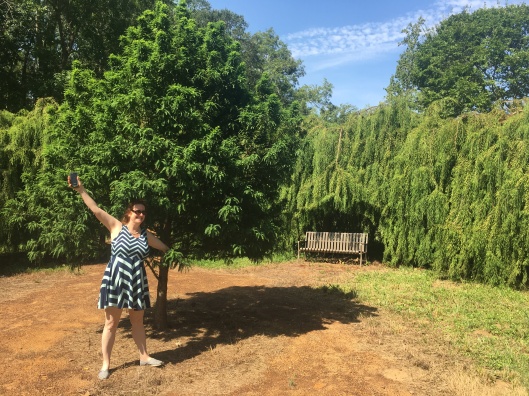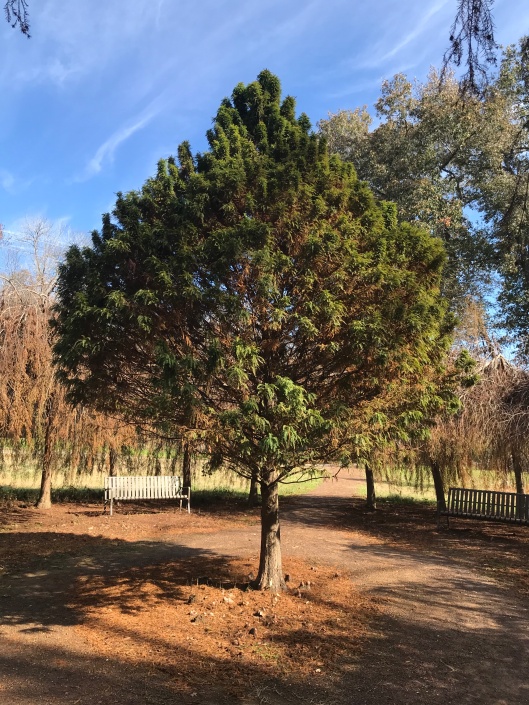We’ve been growing Japanese maples at SFA Gardens since the mid-1980s and now have over 350 varieties scattered over 16 acres of part shade garden. In 1988, the Arboretum was a small patch of ground next to the Agriculture building. It wasn’t long before a six-acre bottomland thicket next to LaNana creek was added. The opportunity to evaluate plants exploded.
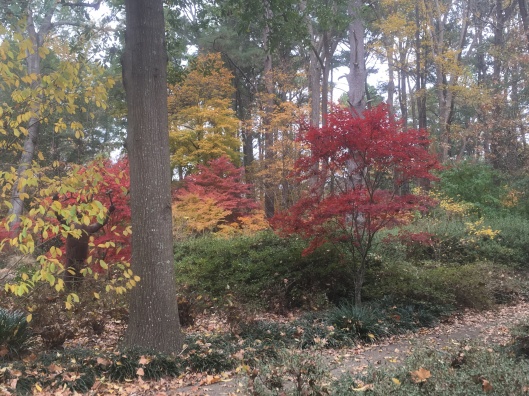

The Japanese maple collection in the Ruby Mize Garden under high canopy pines
One of the first on the list was Japanese maples. Keep in mind that, at that time, Japanese maples were relatively uncommon in nurseries or landscapes in Texas. When encountered, Japanese maples were either seedlings of unknown parentage, ‘Bloodgood’ or ‘Atropurpureum’, the latter being a tree type red leafed seedling. That was about it. Well, I found Dell’s Japanese maples (Junction City, Oregon) and a box of 50 small grafted bare-root plants soon arrived – 50 varieties, each nicely tagged. I think they averaged about $4 each which was barely within our budget, but a good start. When it came to what varieties to send, I said he could just pick the fifty varieties himself knowing summers here are hot, miserable and people shouldn’t live here. In 1988, after a year in the shade house, a small group of Horticulture students and I scattered and planted them under the high canopy pine and oak forest of the Arboretum. Most of that original planting is still with us.
Is everything bigger in Texas? With Japanese maples in the Pineywoods, the answer is maybe! On a visit to SFA Gardens in November 2011, Peter Gregory of Westonbirt Arboretum in England – the author of Japanese maples, now in its fourth edition – remarked that he was going to have to make some changes in his next revision of Japanese maples, at least in the size for age category! For example, our ‘Tiny Tim’ is not so tiny. In 12 years, this variety has reached 11’ tall and 12’ at its widest and sports a 16” circumference at the ground. Most nursery catalogs and references put this variety at less than half that in ten years. A ten-year old ‘Goshiki kotohime’ tree is 9’ tall, 8’ wide and sports a 16” trunk circumference. Our twenty year old ‘Otohime’ and “Shishio hime’ trees are five to six feet tall and eight to ten feet wide.

Hugh Angus and Peter Gregory are surprised at size for age of the maple collection

‘Tiny Tim’ is not so tiny
As for favorites, it’s hard to beat some of the showy red foliaged tree type forms. ‘Red Baron’, ‘Emperor’, ‘Boskoop Glory’, ‘Bloodgood’, ‘Shaina’, ‘Moonfire’ and others all perform beautifully here. We like ‘Seiryu’, a fine tree-type cut leaf form and when given a little sun it has excellent fall color. ‘Orange Dream’ is incredibly bright in the spring and has been a favorite for years. However, I have to admit that I’ve become attached to the dwarf toadstool shrub forms like ‘Oto Hime’, ‘Yatsubusa hime’, ‘Shishio hime’ and others. They just get better with age. Reported to reach two feet tall and 3’ to 4’ wide in ten years, our dwarf forms have reached twice that in a decade. Our visitors are always attracted to the dense Japanese maple shrub varieties. I’ve caught friends and visitors actually petting our big ‘Oto hime’; it creates that kind of response. Unfortunately, we’re at a state university and there are plenty of student pranksters around. Somebody – or it could be a group – have discovered that they can quickly strip the fine leaves and branches to artistically create their own Pac man face on the shrub. If I catch the culprit, it’s jail time.
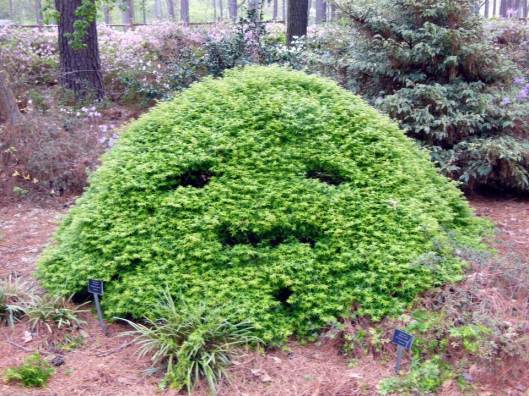
Pranksters abused our collection of dwarf himes
Propagation is normally by grafting and we recommend good vigorous seedling rootstocks. We have rooted Japanese maples at various times of the year but our percentages are very low (<10%). One thing we have noticed is that the dwarf ‘hime’ types seem to grow as fast and as large on their own roots as when grafted on vigorous seedling rootstocks. That’s been a surprise and counter to previous reports. Reasonably priced grafted bareroot plants are available from the Northwest at prices quite a bit less than pre-recession days – and we’ve been surprised how well trees grow off in the container. In the landscape, our mantra is the same. We recommend part shade or full morning sun, a slightly elevated berm, composted pine bark as a mulch, good weed control and moisture management for the first few years and only a minor amount of pruning. We have also discovered that once well entrenched in the garden, Japanese maples are quite drought resistant and appear malady-free. However, we have had a minor amount of squirrel damage; they’ve taken to gnawing on trunks and branches. Don’t even ask me how well they hold up to a vicious herd of wild feral hogs. It’s not a pretty picture. Anyone need some bacon?
Aceraceae – About 100 M.Y.B.P. the center of origin for maples is generally accepted as central China (Hubei, Sichuan, Yunnan provinces). Maples radiated in three directions (westward, southward, and northeast); the latter led into eastern Siberia and then N. America. The species was most abundant in the Miocene from 25 to 5 M.Y.B.P. With the ice age, 5-1.7 M.Y.B.P. there was a great reduction in range and Aceraceae pushed into present-day temperate regions.
Today, there are about 150 species with most in temperate regions. There are a few tropicals. Rarely abundant, the species is often sympatric; that is, several maple species often reside in the same habitat without crossing.
Japanese maples is a term that normally describes the cultivars of Acer palmatum and Acer japonicum (Fullmoon maple). Although there are two dozen additional species in Japan (more if you count introduced species), these two species have received the most interest and use. With both there’s great tendency to mutate which has led to thousands of varieties. There are probably 1100 varieties worldwide with peak interest in the 17th and 18th centuries documenting even more. In the last decade there’s been a surge in varietal introductions as nurseries find new selections with attributes they want to share with the world. The plethora of names has always led me to wonder, are they better, or are they just new, an opportunity for increasing plant sales?
Acer – “the sound of sharpness”
In Japanese: the Japanese maple is “Momiji” or “Kaede” – baby hand and frog hand
Cultivars are divided into eight groups by Vertrees: palmate, dissectum, deeply divided, linearilobum, dwarf, semi-dwarf, variegated, unusuals.
Variegations: In Japanese, markings on the leaf are “fu” and over twenty kinds of variegation described. Many are available in the trade. There’s some tendency to revert but easily controlled with a snip or two. Butterfly – (matures at 8’, narrow tree, white and green variegation); Beni schichi henge – shrub to 8’, tri-color variegation
Landscape uses ae numerous, whether as a specimen small tree, maple glade, varieties available for the large estate gardener to patio containers; rock garden, companions with azaleas and camellias and other part-shade lovers, high canopy pine forests, etc.
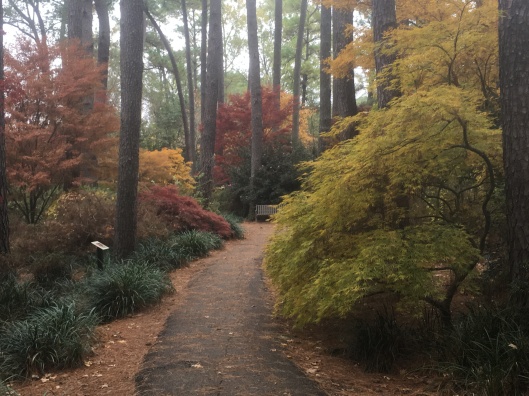
Japanese maples, camellias, azaleas and more under high canopy pines
Propagation: Seed generally collected when it turns brown, stratified 90 to 120 days. Most improved varieties are grafted; some can be rooted. Some cultivars are reported as weak on their own roots. Varieties are generally grafted on vigorous A. palmatum seedlings. Dwarf, cascading types often grafted high which often costs more.
Locating the Japanese maple in your garden: Think sunlight first. Part shade best but some cultivars do quite well in almost full sun in East Texas (straight species, green palmate cultivars). Morning sun is fine but it’s prudent to avoid the blast of a full western sun. Dissectums and heavily divided cultivars need protection from western sun and drying winds. Variegated forms generally need additional protection – again depending on the cultivar’s degree of variegation. Think drainage second. Tolerant of sands to clays – generally prefers slightly acidic soils – performs best under a good mulch. Plant “high” – do not plant too deep – planting in a raised bed or on a berm is best.

Plant on a nice raised berm with plenty of mulch
Care and Culture: Japanese maples are really trouble free once well established in the landscape. Reliable even moisture in first two to three years – particularly on plants with strong exposure to direct sunlight. Mulch with pine straw or pine bark.
Sources: Japanese maplesare becoming more available locally. Rare and unusual varieties via mail order means homeowners can now receive robust 1 gallon plants in well-packed boxes from reputable mail order firms.
The following table is a list of strong performing maples in our collection at the SFA Mast Arboretum and in the Ruby M. Mize Azalea Garden, SFA, Nacogdoches, Texas.
Acer palmatum
‘Orange Dream’ was introduced in the late 1980s by the Fratelli Gilardelb Nursery, near Milan, Italy. This variety was selected for its unique spring colored foliage. Orange Dreamis a beacon in the shade of the Ruby M. Mize Azalea garden. New growth is yellow green with leaf edges trimmed in hues of salmon and pink. Fall color is red and green and less than inspired, but quite pleasing to those who appreciate a more subdued display. Orange Dream is reported to develop into an upright bushy shrub reaching ten feet in that many years.

Acer palmatum ‘Orange Dream’ in the spring
‘Orangeola’ was introduced in the USA in the 1980s and has found great favor in many gardens. This is a dissectum blessed with a strong weeping habit. With burgundy-red spring foliage, this variety greens up for the summer and is known for late summer and early fall new growth that is bright orange-red. This is unique among Japanese maple varieties and worth noting. In the fall, ‘Orangeola’ carries burgundy-red foliage into late December in our gardens, depending on the severity of winter freezes. At any rate, it’s a first class specimen and should be given space to develop. This variety is probably best trained to a 6’ to 9’ tall bamboo pole to give the variety some height. It is strongly weeping and tends to be taller than wide. This is a relatively new cultivar in our garden but it’s performed well in a number of spots and looks very promising. It appears durable enough to take Texas heat and sun in good stride, at least in our region. New growth in September is red.

Acer palmatum ‘Orangeola’ in the foreground
‘Fireglow’ is similar to ‘Bloodgood’. It’s more upright, leaves are less divided and the colors more intense. ‘Fireglow’ foliage emerges in the spring a bright pink which quickly turns to red and then holds well into early summer. In our garden, this variety fades to dark green foliage with a nuance of burgundy in the summer. Fall foliage returns with the first cold spells in November, reaches a peak in December, and can be as intense as the spring with distinctive splashes of red and burgundy dominating the celebration. ‘Fireglow’ was selected by the Fratelli Gilardelli Nursery, near Milan, Italy over 35 years ago – and it has found favor in many gardens in the southern USA.

Acer palmatum ‘Moonfire’
‘Omure Yama’ wins my best in fall foliage for a Japanese maple. This variety grows relatively fast and car reach 15’ tall and as wide. Lime green new growth in the spring has an orange leaf edge that always brings a smile to the first timer with this species. . But it’s the fall show that gets the A+. In my mind, this is just the right combination of reds and yellows to say “Hey! Look at me!” ‘Omure Yama’ is fast growing and upright as a young tree. Once a small tree or large shrub in the landscape, this variety begins to exhibit a slight cascading habit with new growth that is quite attractive.
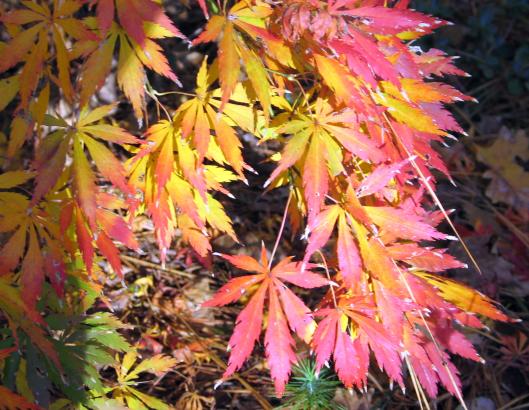
Acer palmatum ‘Omure Yama’
‘Crimson Queen’ is a USA cultivar which has achieved a good presence in the southern USA. Plants can reach 10’ high and 15’ wide when well grown and time is not a problem. Crimson Queen is a special weeping mounding form blessed with highly dissected leaves. The variety features vibrant burgundy foliage in the spring. In our region, the species greens up for the summer. Fall color can vary depending on plant location. Plants in plenty of sun – for at least part of the day – can be dramatically red and yellow. Fall foliage on plants grown in the shade lean to the burgundy end of the color range.

Acer palmatum ‘Crimson Queen’
‘Oto Hime’ is the SFA Mast Arboretum’s favorite toadstool award winner year in and out. Actually, this is the tree world’s version of the ugly duckling transforming into a beautiful swan. In the container, it’s a sad looking fellow in its youth. No doubt it’s kind of slow at first, but with a little time and good position, this plant can take off. It’s one of those plants that just get better and better with age. Six or seven year old plants should reach four to five feet wide, and two to three foot tall. Our twenty year old specimen is now xx’ wide and xx tall. We have rooted this cultivar and, as we’re prone to do with student-generated goodies, we’ve planted a good number in the SFA Mast Arboretum and Ruby M. Mize Azalea Garden. Fall color is somewhat below Japanese maple quality, but early spring growth is attractive. Small lime-green leaves sport salmon-burgundy edges, which soon green up for the summer. The tree is appears to be quite drought resistant once well established. Why doesn’t someone high graft this variety on a vigorous Japanese rootstock. Aim for a trunk of three to four feet with this toadstool-like beauty parked right on top. Who wouldn’t like that?

Acer palmatum ‘Oto hime’ – cutting grown
Acer japonicum – Fullmoon maples
‘Vitifolium’ is a fullmoon maple that has found a happy home at SFA. We don’t have many full moon maple varieties here and most of what we have are slower growing than this cultivar. Located in the Ruby M. Mize Azalea Garden, the tree can be spotted from a good distance. The fall color has been described by visitors as “iridescent”, “outrageous”, “striking” and foliage transitions between yellow, red and orange to make a big splash in the fall.
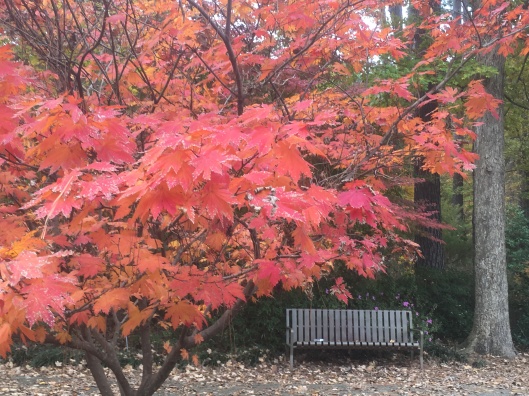
Acer japonicum ‘Vitifolium’
References: Japanese maples by Vertrees, Timber Press,4th edition, 2008; Maples of the World by V.M. van Gelderen, Jong, and Oterdoom, Timber Press, 1994; Maples for Gardens by C.J. van Gelderen and D.M. van Gelderen, Timber Press, 1999.

